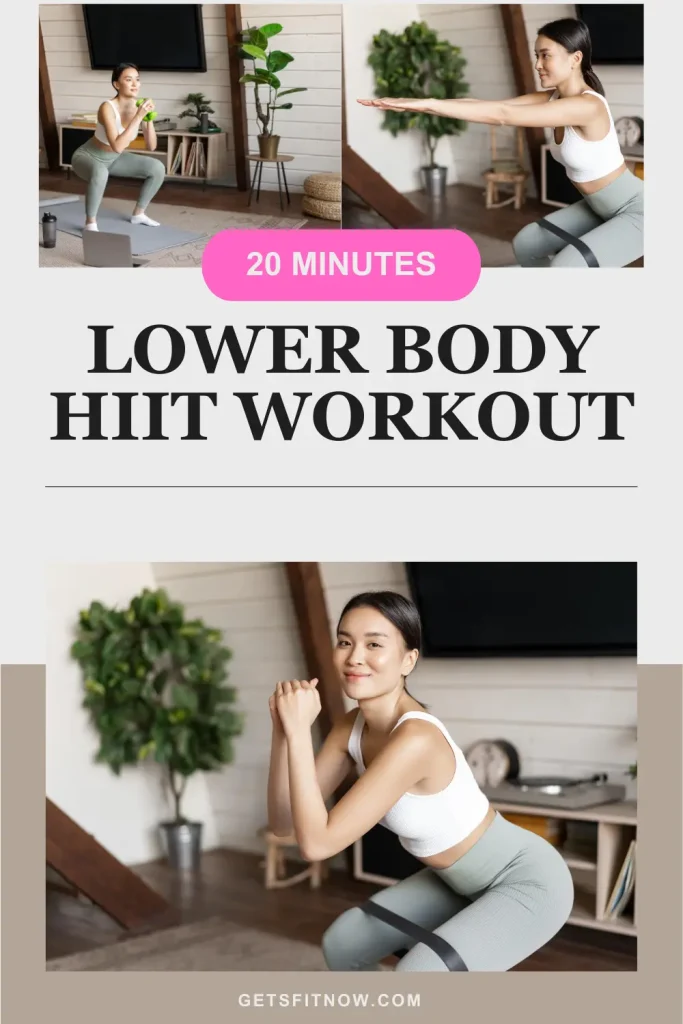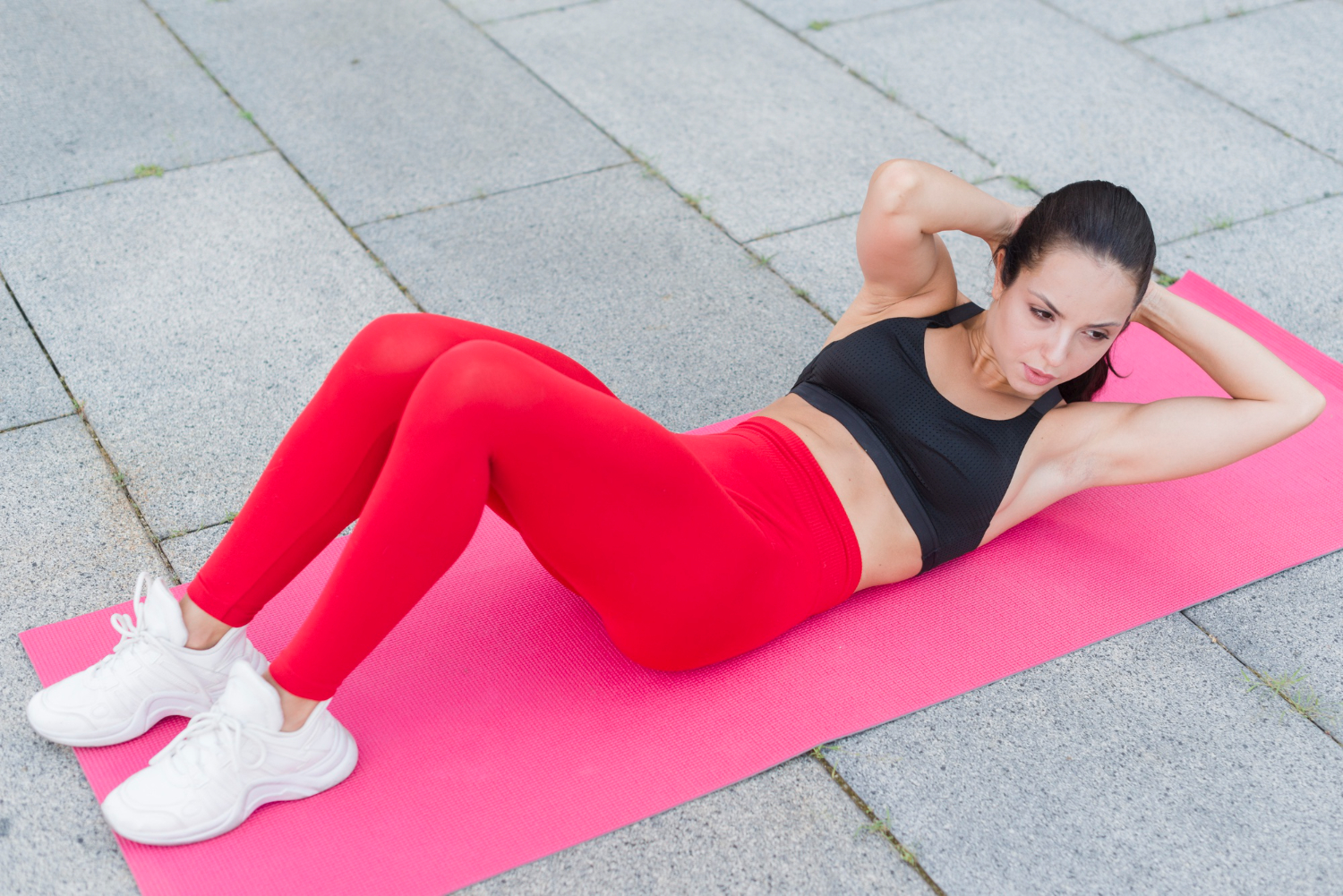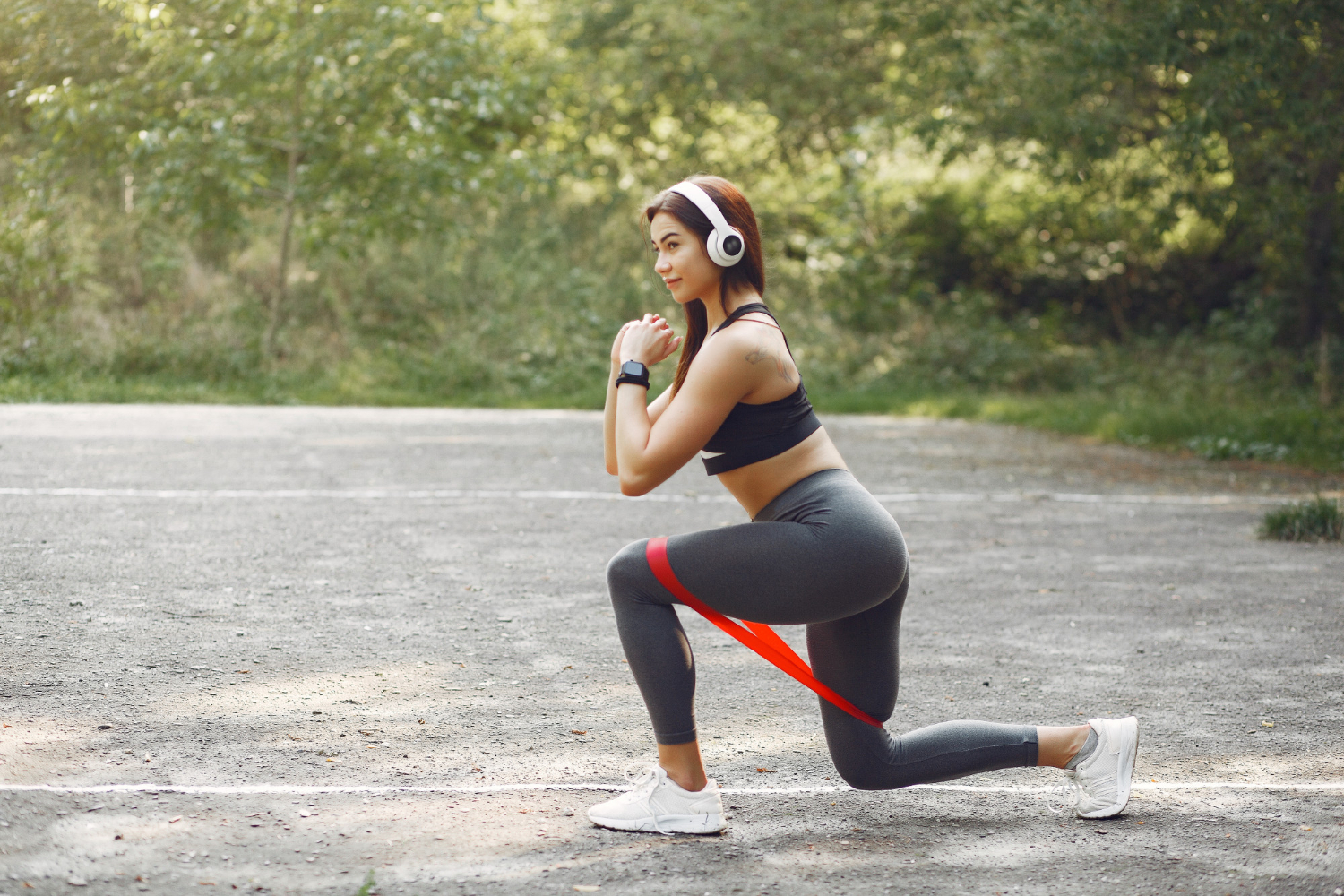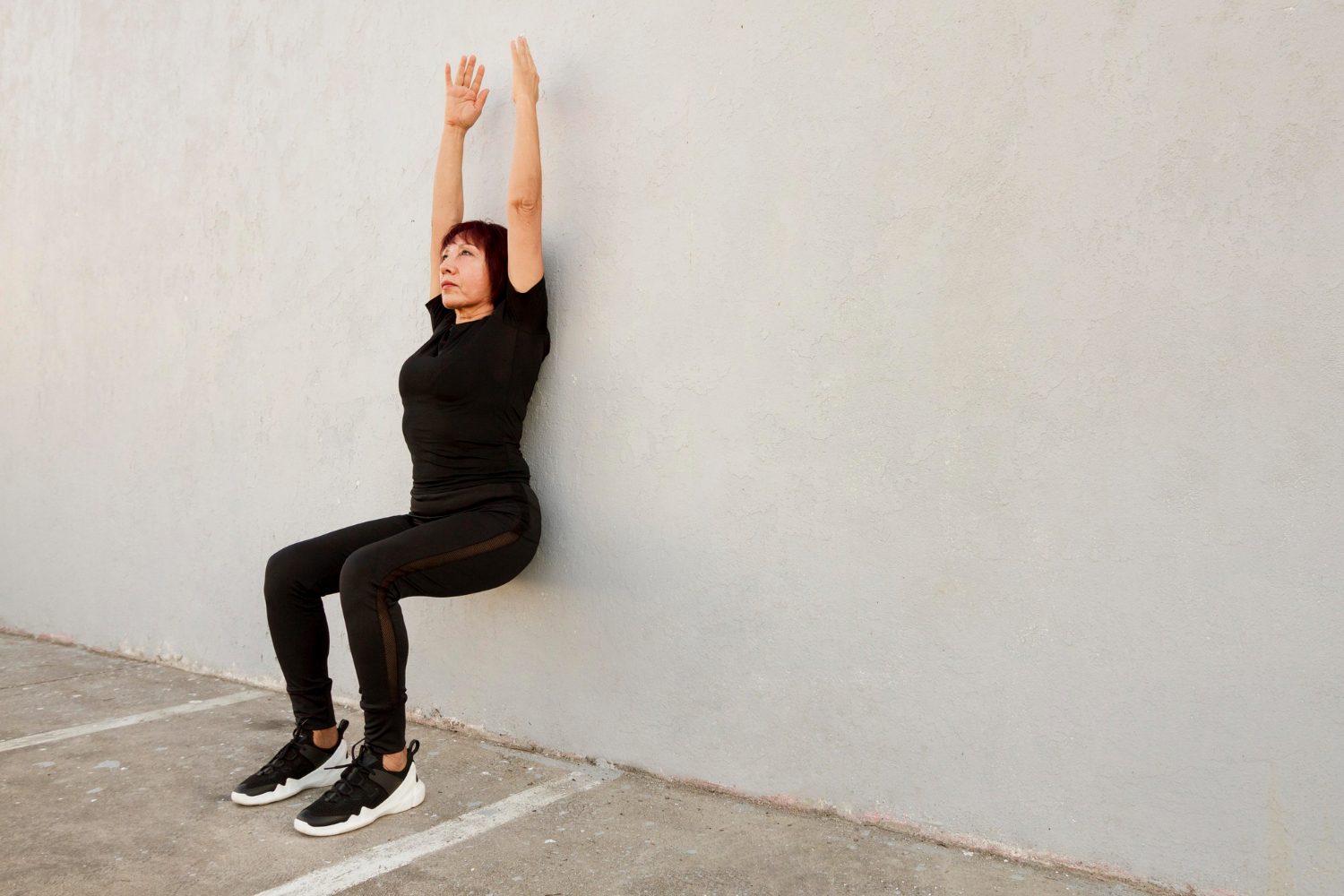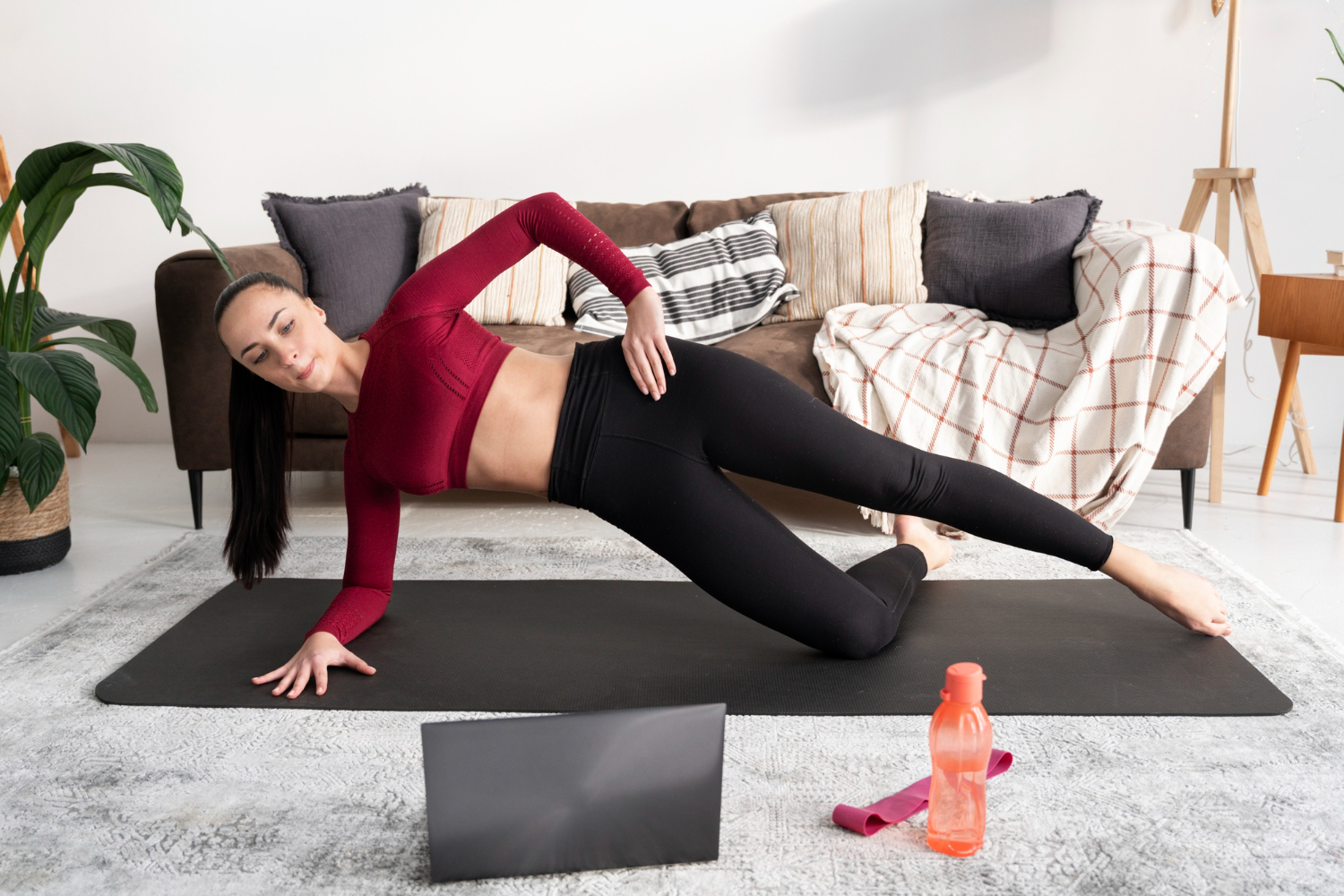The 7 Best Lower Body Hiit Workouts For Women
Hey there, ladies! Ready to kick your lower body into high gear? In this article, we’re diving into the world of HIIT (High-Intensity Interval Training) workouts designed specifically for your lower half.
Say goodbye to boring routines and hello to sculpted legs, toned glutes, and a whole lot of sweat! Let’s jump right in and get those muscles burning!
Why HIIT is Good For Your Lower Body And Legs?
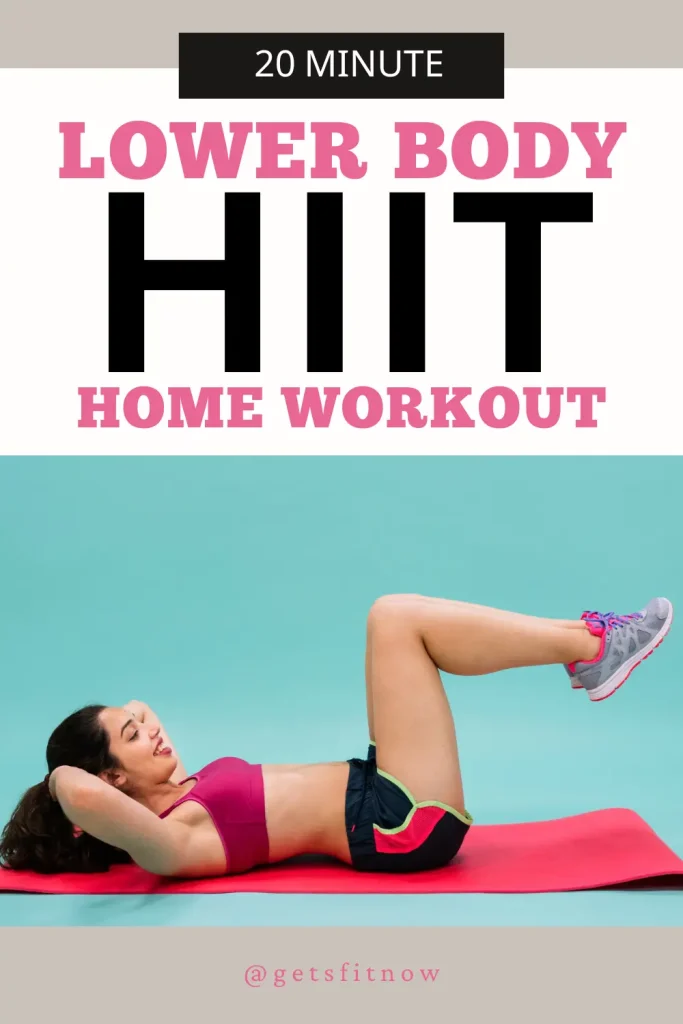
HIIT is a powerhouse for your lower body, offering a fun and effective way to sculpt strong, lean legs while maximizing your time and effort. HIIT is like a turbo boost for your lower body and legs! Here’s why:
Efficiency: With HIIT, you’re working out in short bursts of intense activity followed by brief rest periods. This means you can torch calories and build strength in less time compared to traditional workouts.
Muscle Activation: HIIT engages multiple muscles in your lower body simultaneously, including your quads, hamstrings, glutes, and calves. This comprehensive activation helps tone and sculpt your legs from every angle.
Fat Burning: The high-intensity nature of HIIT workouts revs up your metabolism, leading to greater calorie burn even after you’ve finished exercising. This can help slim down your legs and reduce stubborn fat deposits.
Endurance Boost: HIIT improves your cardiovascular endurance, making everyday activities like climbing stairs or running errands feel like a breeze. Your legs will thank you for the extra stamina!
Variety: With endless combinations of exercises, you’ll never get bored with a HIIT workout. Whether it’s jumping lunges, squat jumps, or burpees, there’s always a new challenge to keep your lower body guessing and progressing.
How to Plan For Hiit Exercise For the Lower Body?
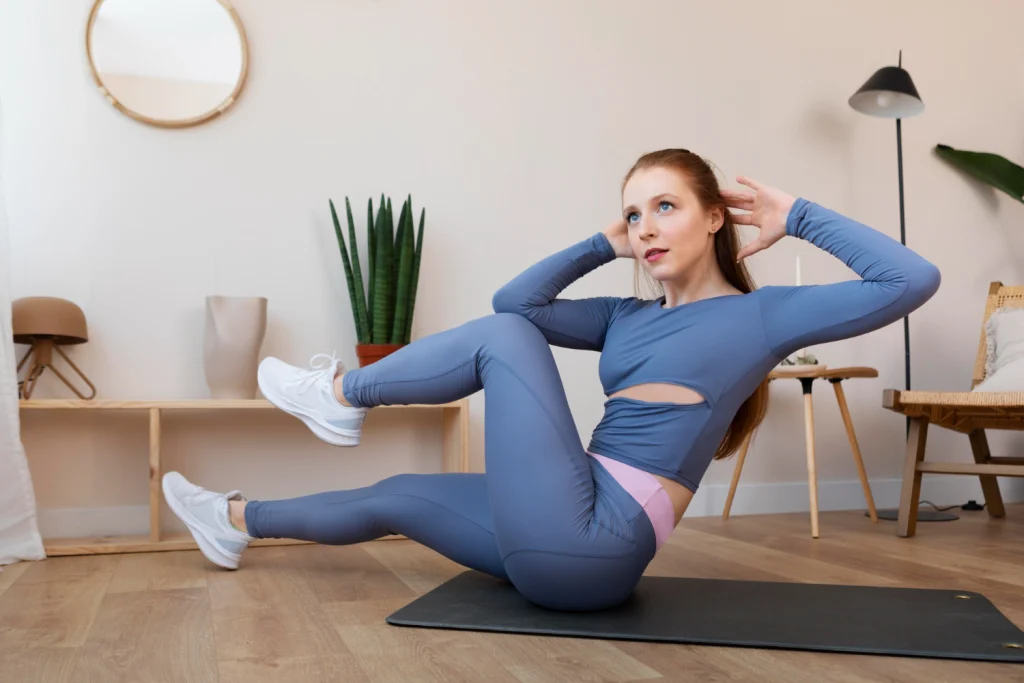
Planning a killer HIIT workout for your lower body is all about balance and variety. Here’s how to do it:
Warm-Up: Start with a dynamic warm-up to get your muscles fired up and ready to go. Include movements like leg swings, hip circles, and bodyweight squats to prep your lower body for action.
Exercise Selection: Choose 4-6 lower body exercises that target different muscle groups. Mix it up with squats, lunges, deadlifts, step-ups, and plyometric movements like jump squats or box jumps.
Interval Structure: Set your intervals for work and rest. A common ratio is 40 seconds of work followed by 20 seconds of rest, but you can adjust based on your fitness level and goals.
Circuit Format: Perform each exercise back-to-back for one round, then rest for 1-2 minutes before repeating the circuit 2-4 times. This keeps your heart rate up and maximizes calorie burn.
Progressive Overload: As you get stronger, gradually increase the intensity by adding weights, increasing reps, or decreasing rest time between exercises.
Cooldown: Don’t forget to cool down with some gentle stretching to improve flexibility and reduce muscle soreness. Focus on stretching your quads, hamstrings, calves, and glutes.
Recovery: Give your lower body time to rest and recover between HIIT sessions. Aim for 1-2 days of rest or low-intensity exercise to allow your muscles to repair and grow stronger.
The Best Exercise For Lower Body HIIT Workout:
Here’re some most effective lower body workouts that you can try in your home.
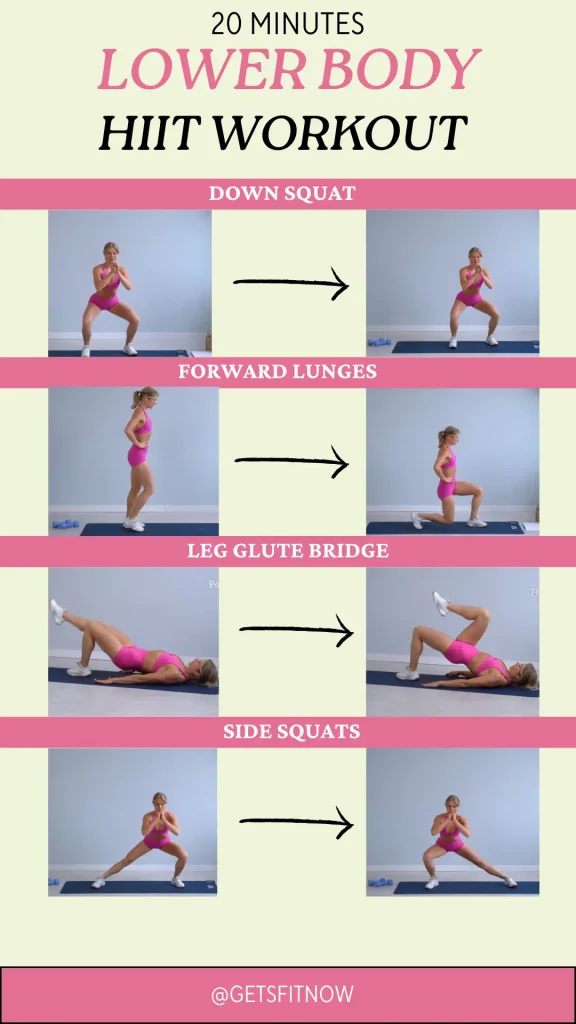
1. Bodyweight Squat:
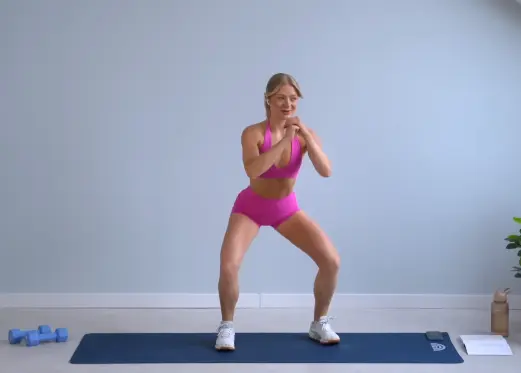

Starting Position: Stand with your feet shoulder-width apart or slightly wider, toes pointed slightly outward. Keep your chest up, shoulders back, and engage your core muscles for stability.
Squat Descent: Initiate the movement by bending your knees and hips simultaneously, lowering your body down as if you’re sitting back into an imaginary chair. Keep your weight distributed evenly on your heels and midfoot, and aim to lower your hips until your thighs are parallel to the ground or as low as comfortable.
Depth: While maintaining proper form, strive to achieve a full range of motion by lowering your body until your thighs are parallel to the ground. However, it’s essential to work within your own range of motion and comfort level, especially if you’re new to squats or have mobility limitations.
Squat Ascent: Drive through your heels and midfoot to push yourself back up to the starting position. Focus on squeezing your glutes at the top of the movement to maximize engagement and fully extend your hips.
Repetition: Aim to perform 8-12 repetitions for beginners and 12-15 repetitions for more advanced individuals.
2. Forward Lunges:
Here’s a step-by-step guide to doing forward lunges:


- Stand up straight with your feet hip-width apart.
- Take a big step forward with one leg.
- Lower your body down by bending both knees until they form 90-degree angles.
- Keep your front knee aligned with your ankle and make sure it doesn’t go past your toes.
- Your back knee should almost touch the ground.
- Push yourself back up to the starting position by straightening your front leg.
- Repeat the movement with the other leg, alternating sides.
- Keep your torso upright and engage your core muscles throughout the exercise.
- Aim for 2-3 sets of 10-12 repetitions on each leg.
3. Side Squats:
Here’s a simple guide to doing side squats:
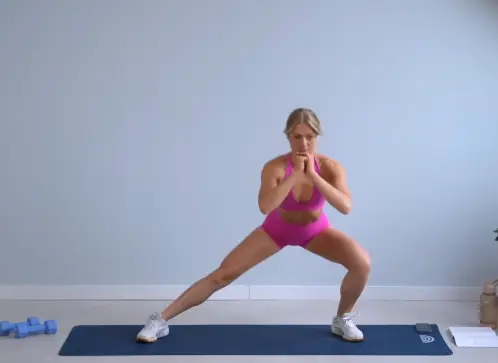
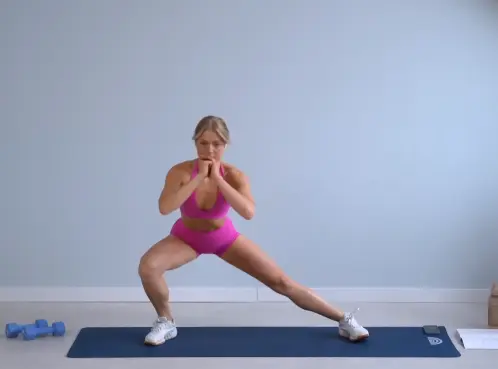
- Start by standing with your feet shoulder-width apart.
- Take a big step to the side with one leg, keeping your toes pointed forward.
- Bend the knee of the leg you stepped out with, lowering your body down into a squat position.
- Keep your other leg straight and your foot flat on the ground.
- Push through the heel of your bent leg to return to the starting position.
- Repeat the movement on the opposite side, stepping out with the other leg.
- Keep your chest up and your back straight throughout the exercise.
- Aim for 2-3 sets of 10-12 repetitions on each side.
4. Squat Jump:

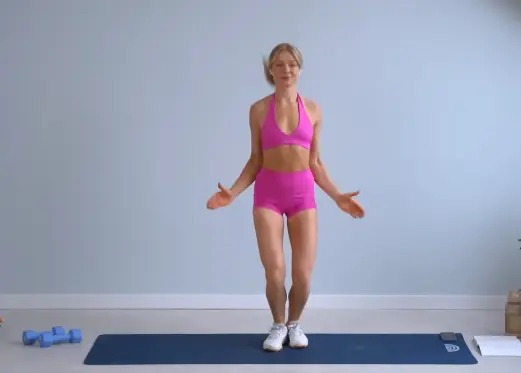
- Start by standing with your feet shoulder-width apart.
- Lower your body into a squat position, bending your knees and pushing your hips back.
- Keep your chest up and your back straight.
- Explosively jump up as high as you can, extending your legs fully.
- Swing your arms upward to help propel you higher.
- Land softly back into the squat position, bending your knees to absorb the impact.
- Immediately go into the next squat jump, without pausing between reps.
- Aim for 2-3 sets of 8-12 repetitions.
5. Pulse Squat:
- Stand with your feet shoulder-width apart.
- Lower your body into a squat position, bending your knees and pushing your hips back.
- Stop halfway down so your thighs are parallel to the ground.
- Hold this position and pulse up and down slightly, moving only a few inches.
- Keep your chest up and your back straight.
- Continue pulsing for a set amount of time or repetitions.
- Make sure to engage your leg muscles throughout the movement.
- Aim for 2-3 sets of 10-15 pulses.
6.Wall Sit:
- Find a clear wall and stand with your back against it.
- Walk your feet out about 1 to 2 feet from the wall.
- Lower your body down by bending your knees until they form a 90-degree angle.
- Keep your back flat against the wall and your feet flat on the ground.
- Hold this position for as long as you can, aiming for at least 30 seconds to start.
- Focus on keeping your thighs parallel to the ground.
- Keep your core engaged and your breathing steady.
- If you feel too much strain, gradually come out of the wall sit.
- Aim to increase your hold time gradually as you get stronger.
- Repeat for 2-3 sets, resting in between each set.
7. Kettlebell Swings:
- Stand with your feet shoulder-width apart and the kettlebell on the ground in front of you.
- Squat down and grasp the kettlebell handle with both hands, keeping your back straight.
- Swing the kettlebell back between your legs, bending your knees slightly.
- Explosively drive your hips forward, swinging the kettlebell up to chest level.
- Keep your arms straight and use the momentum from your hips to swing the kettlebell.
- Control the swing as it reaches chest level, then let it swing back down between your legs.
- Repeat the movement for the desired number of repetitions.
- Be sure to start with a light weight and gradually increase as you become more comfortable with the movement.
